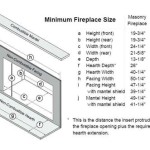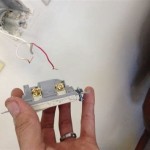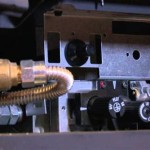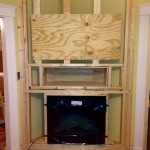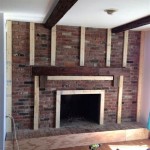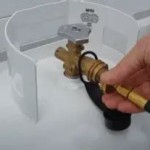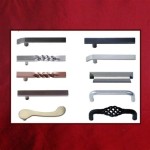Linear Fireplace Inserts: Modern Heating and Aesthetic Enhancement
Linear fireplace inserts are a modern and increasingly popular option for homeowners seeking to upgrade existing fireplaces or install new heating solutions. These inserts, characterized by their elongated, horizontal design, offer a contemporary aesthetic while providing efficient and controllable heat. Unlike traditional fireplaces, linear inserts are designed to be enclosed within an existing firebox or a newly constructed framework, providing a clean, streamlined appearance and improved safety features.
The core function of a linear fireplace insert is to convert an existing inefficient fireplace into a more effective heating appliance. Traditional open fireplaces lose a significant amount of heat through the chimney, sometimes creating a net negative effect by drawing warm air out of the room. Linear inserts mitigate this issue by creating a sealed combustion chamber, directing heat into the living space. This enhanced efficiency contributes to lower heating bills and a reduced environmental footprint.
The versatility of linear fireplace inserts allows for installation in a variety of settings, from traditional living rooms to modern, open-concept spaces. They can be fueled by natural gas, propane, or electricity, providing flexibility based on availability and personal preference.
Key Features and Benefits of Linear Fireplace Inserts
Several key features contribute to the appeal of linear fireplace inserts. These include aesthetic enhancements, improved heating efficiency, and advanced control options.
Aesthetically, linear fireplace inserts offer a clean, modern look that complements contemporary interior design. The elongated shape creates a focal point in the room, drawing the eye and adding visual interest. Many models feature a variety of media options, such as glass beads, decorative stones, or realistic-looking logs, allowing homeowners to customize the insert to their specific taste. The visible flame area is often wider than traditional fireplaces, creating a more dramatic and captivating display. Framing options range from minimalist designs to more elaborate surrounds, further enhancing the overall aesthetic.
The improved heating efficiency is a significant advantage of linear fireplace inserts. By creating a sealed combustion chamber, these inserts prevent heat from escaping up the chimney. Instead, the heat is directed into the room, providing supplemental heating that can significantly reduce reliance on central heating systems. The exact efficiency rating varies depending on the model and fuel type, but most linear inserts offer substantial improvements over traditional open fireplaces. This efficiency translates directly into lower energy bills and a more comfortable living environment.
Advanced control options are another key benefit of modern linear fireplace inserts. Many models come equipped with remote controls or smart home integration, allowing homeowners to adjust the flame height, heat output, and fan speed from the comfort of their couch. Programmable thermostats provide precise temperature control, ensuring consistent and comfortable heating. Some models also offer safety features such as automatic shut-off in case of overheating or gas leaks. These advanced control options enhance both the convenience and safety of operating the fireplace insert.
Fuel Options for Linear Fireplace Inserts
The choice of fuel determines the performance and operational costs of a linear fireplace insert. The three primary fuel options are natural gas, propane, and electricity. Each has its own set of advantages and disadvantages.
Natural gas inserts are often preferred for their relatively low fuel costs and consistent supply. Natural gas is typically piped directly into the home, eliminating the need for fuel storage. Natural gas inserts generally offer high heating efficiency and a realistic flame appearance. However, access to a natural gas line is necessary for installation, which may not be available in all locations.
Propane inserts offer a viable alternative for homeowners who do not have access to natural gas. Propane is stored in tanks and can be readily delivered to the home. Propane inserts provide similar heating performance and flame aesthetics as natural gas models. However, propane fuel costs are typically higher than natural gas, and regular tank refills are required.
Electric fireplace inserts offer a convenient and versatile option, particularly for spaces where venting is not possible or desirable. Electric inserts do not require a chimney or flue, making installation relatively simple and inexpensive. They are also highly energy-efficient, converting nearly all electricity into heat. While electric inserts may not produce the same level of radiant heat as gas or propane models, they can effectively supplement heating in smaller rooms. The flame appearance of electric inserts varies depending on the model, with some offering realistic simulated flames and others providing more abstract visual effects.
Installation Considerations for Linear Fireplace Inserts
Proper installation is crucial for the safe and efficient operation of a linear fireplace insert. It is highly recommended that installation be performed by a qualified professional with experience in fireplace installation and relevant building codes. Several factors must be considered during the installation process.
The existing firebox must be inspected to ensure it is structurally sound and capable of supporting the weight of the insert. Any necessary repairs or modifications should be made before proceeding with the installation. The chimney must also be inspected and cleaned to ensure proper ventilation. For gas or propane inserts, a gas line must be run to the fireplace, and proper leak testing must be performed. For electric inserts, a dedicated electrical circuit may be required.
Proper ventilation is essential for gas and propane inserts to ensure the safe removal of combustion byproducts. A flue liner may need to be installed or upgraded to meet current safety standards. The insert must be properly sealed to prevent drafts and ensure optimal heating efficiency. Clearance requirements must be strictly adhered to, ensuring that the insert is installed at a safe distance from combustible materials.
The installation process may also involve framing and finishing work to create a custom surround for the insert. This can include building a new firebox, installing a decorative mantel, and adding tile or stonework. The final result should be a seamless integration of the insert into the surrounding space, creating a visually appealing and functional fireplace.

Linear Premium Gas Fireplaces Made In America Fireplace Xtrordinair

Enviro S Gas C72 Linear Fireplace

Gas Fireplaces Fireplace Xtrordinair Made In America

Linear Gas Fireplaces Valor

Linear Gas Fireplaces Valor

Probuilder 42 Linear Basic Gsb Made In America Fireplace Xtrordinair

Montigo 34fid Linear Fireplace Insert Nashville Outdoor Kitchens Gas Grills Fireplaces

Linear Contemporary Fireplaces Friendly Fires

We Modern Linear Fireplaces Powerful Gas Electric

Linear Direct Vent Gas Fireplace 60 With Ceramic Glass Black Crushed Media And See Thru Option Drl4060 Drl4000 By Superior F4385

